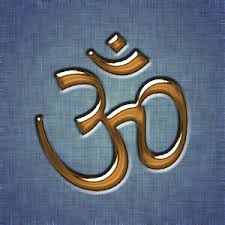Ancient Hindu Culture
Saturday, July 3, 2010
Aditi
From Wikipedia,
Aditi (Adithi - Sanskrit अदिति, limitless)[1] [from a without + diti bound from the verbal root da to bind] boundless, free; as a noun, infinite and shoreless expanse. In the Vedas, Aditi is Devamatri (mother of the celestial gods) as from and in her cosmic matrix all the heavenly bodies were born. As the celestial virgin and mother of every existing form and being, the synthesis of all things, she is highest Akasha. Aditi is also identified with Vāc (mystic speech) in the Rig Veda, and with the Mulaprakriti or Prakriti in Vedanta. As the womb of space, she is a feminized form of Brahma. The line in the Rig Veda, "Daksha sprang from Aditi and Aditi from Daksha" (RV 10.72.4) has reference to "the eternal cyclic re-birth of the same divine essence". In one of the most mystic aspects, Aditi is divine wisdom. Aditi is the goddess of space, consciousness, the past, the future, and fertility.[2]
In the Vedas
Aditi is mentioned nearly eighty times in the Rig Veda. She is usually mentioned along with other gods and goddesses, there is no one hymn addressed exclusively to her, and unlike many other Vedic gods. She is perhaps not related to a particular natural phenomenon like other gods. Compared to Usha and Prithvi, Aditi can be defined as the cosmic creatrix, the creativity of the all-creating.
Perhaps the most outstanding attribute of Aditi is her motherhood. She is preeminently the mother of 12 Adityas whose names are as follows: Vivasvān, Aryamā, Pūṣā, Tvaṣṭā, Savitā, Bhaga, Dhātā, Vidhātā, Varuṇa, Mitra, Śatru, and Urukrama.[3] Aditi is also said to be the mother of the great god Indra, the mother of kings (2.27), and the mother of gods (1.113.19). In the Rig Veda. Aditi is one of most important figures of all.
As a mothering presence, Aditi is often asked to guard the one who petitions her (1.106.7 ; 8.18.6) or to provide him or her with wealth, safety, and abundance (10.100; 1.94.15). Appropriate to her role as a mother, Aditi is sometimes associated with or identified as a cow. As a cow, she provides nourishment, and as the cosmic cow, her milk is identified with the redemptive, invigorating drink Soma (1.153.3).
The name Aditi includes the root "da" (to bind or fetter) and suggests another aspect of her character. As A-diti, she is un-bound, free one, and it is evident in the hymns to her that she is often called to free the petitioner from different hindrances, especially sin and sickness. (2.27.14). In one hymn, she is asked to free a petitioner who has been tied up like a thief (8.67.14). As one who unbinds, her role is similar to her son Varuna's as guardian of Rta, cosmic moral order. She is called the supporter of creatures (1.136).
Aditi is also called widely expanded (5.46.6) and extensive, the mistress of wide stalls (8.67.12), and in this respect, one is reminded of Prithvi. In fact, Prithvi and Aditi become virtually identified in the Brahamanas.[citation needed] Aditi also is the mother of the Vamana avatar of Vishnu. Accordingly, Vishnu was born as the son of Aditi in the month of Shravana (5th month of the Hindu Calendar, also called Avani) under the star Shravana. Many auspicious signs appeared in the heavens, foretelling the good fortune of this child.
Aditi challenges the modern idea that the Aryan peoples were patriarchal. Aditi was regarded as both the sky goddess, and earth goddess, which is very rare for a prehistoric civilization. Most prehistoric civilizations venerated a dual principle, Sky Father and Earth Mother, which appears to be borrowed from the concept of Prithivi and Dyaus Pita. Aditi was attributed the status of first deity by the Aryan culture, although she is not the only one attributed this status in the Vedas. She is addressed, in the Ŗg Veda as "Mighty". [citation needed]
Hello World,
In this blog I will write about my leanings in ancient Hindu culture. I am admirer of Hindu culture especially Vedic period of culture. I got particularly interested in study of Vedic culture after knowing that it is very much rich in Science and Philosophy and my study encourage me to dwell deep into it. And now I am realizing that it is ocean of knowledge and very large to comprehend in a single life with you have other duties to perform.
I will use this blog to keep backlog of my learning so whatever efforts I put in this great journey can be preserved in form of this blog. I hope that content of this blog will be useful to other people also who are interested in study of Hindu/Vedic culture.
This blog is my tribute to that great culture, that great apex civilization lived in the virtuous land of Ancient India.
I want to complete this entry of blog with a verse from Yajur Veda (It is one of the four Vedas):
May all the radiance unify and increase in magnitude. ” – Yajur Veda

